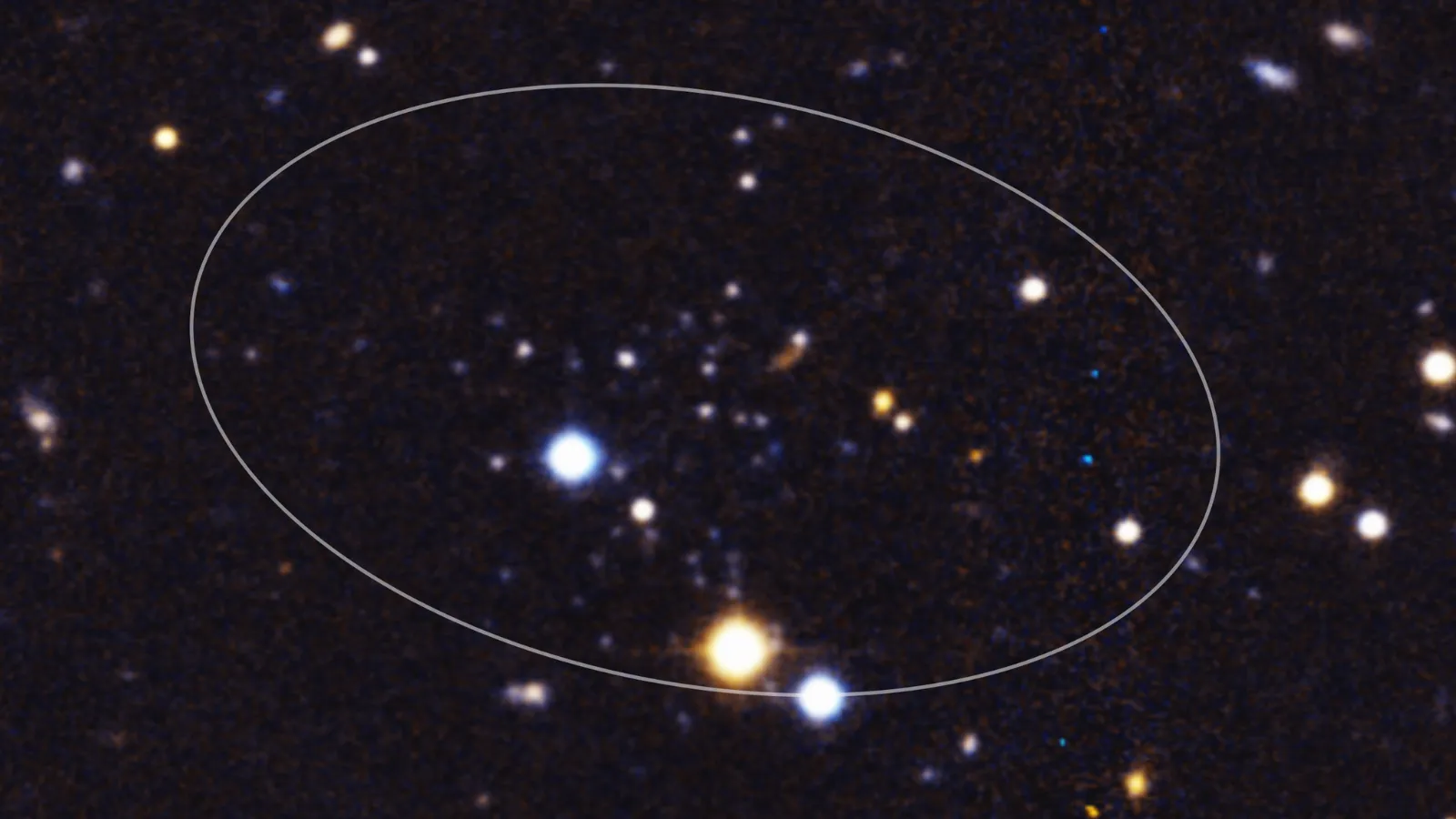Now Reading: Scientists Unveil Smallest Galaxy Ever, Comparable to a Grain of Rice
-
01
Scientists Unveil Smallest Galaxy Ever, Comparable to a Grain of Rice
Scientists Unveil Smallest Galaxy Ever, Comparable to a Grain of Rice

Quick Summary:
- Astronomers have discovered Andromeda XXXV, the smallest and faintest galaxy ever seen, located roughly 3 million light-years away.
- This dwarf galaxy, along with others orbiting the Andromeda galaxy, challenges current theories of cosmic evolution as smaller galaxies were expected to be destroyed in the early universe’s harsh conditions.
- Compared to similar galaxies around the Milky way that stopped forming stars 10 billion years ago, smaller satellite galaxies near andromeda show signs of star formation up to 6 billion years ago. scientists hypothesize that gravitational stripping by their parent galaxy may have ended this process – unlike Milky Way dwarf galaxies where gas depletion occurred naturally over time.
- The revelation raises questions about why Andromeda XXXV survived the intense heating of the early universe while many others did not. Researchers speculate its ongoing survival introduces complexities about how gas loss and star formation proceed in extreme environments.
- Study led by astronomers at University of Michigan; findings were published in The Astrophysical Journal Letters.
Indian Opinion Analysis:
This discovery opens new avenues for understanding cosmic history and galaxy formation processes which could indirectly enhance astrophysics research globally-including India’s growing ambitions in space exploration through ISRO’s programs like Aditya-L1 or private-sector initiatives aiming to expand India’s role in observational astronomy. As a nation aspiring to become a leader in space technologies and related sciences, such findings present opportunities for Indian researchers to join international collaborations analyzing data from observatories like NASA’s Hubble Space Telescope or future missions studying deep-space phenomena. Furthermore, gaining insights into galactic evolution can help optimize india’s own astronomical datasets derived from projects like AstroSat or ground-based telescopes at Hanle Observatory-strengthening india’s contributions within global science communities.























